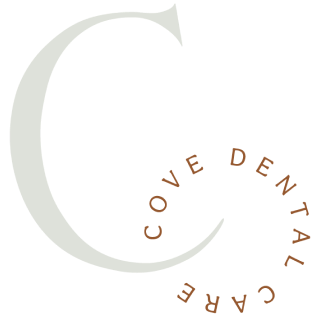2104 Old Spartanburg Rd Greer, SC 29650

Tooth Extractions in Greer, SC
Patients may necessitate tooth extraction to address severe infections, overcrowding, damage, or impacted teeth. Extracting these teeth not only alleviates discomfort but also enhances overall dental health and functionality. As a preventative measure, tooth extractions halt the spread of infection or damage to the entire dental structure and surrounding teeth. Dr. Adam Carraway offers tooth extraction services in Greer, SC, ensuring patients' comfort throughout the procedure.
Tooth extraction involves the removal of a tooth from its socket, a procedure typically performed by a skilled surgeon, periodontist, or general dentist. While some patients may worry about experiencing excessive pain during or after the procedure, Dr. Carraway prioritizes patient comfort and ensures a comfortable experience throughout treatment.
When Should I Consider a Tooth Extraction?
As a dental practice, we prioritize tooth extractions as a last resort in addressing dental health concerns. Your local dentist will provide detailed insight into the reasons behind the necessity for tooth extraction and what you can anticipate throughout the process. It's important to understand the distinction between primary teeth, the initial set that naturally shed as a child grows, and permanent teeth, which replace the primary set.
While permanent teeth are intended to endure for a lifetime, various circumstances may warrant extraction. These include issues such as overcrowding, irreparable damage, impacted teeth, periodontal disease or gum infections, or dental trauma resulting from an accident.
Prior to recommending a tooth extraction, your dentist conducts a thorough examination of the affected tooth, along with an assessment of your mouth and gums, ensuring your overall health is conducive to undergoing the procedure.
Tooth Extraction Process
Your dentist may recommend one of two types of tooth extraction procedures: simple and surgical extractions. Simple extractions, typically conducted under local anesthesia, are primarily performed on visible teeth.
In contrast, surgical extractions are more complex. Your dentist may opt for this method if the tooth is difficult to access, often due to being impacted or broken. During a surgical extraction, the dentist may make an incision to access the tissue covering the impacted tooth. In some cases, the tooth may need to be removed in multiple pieces.
When is a Tooth Extraction Necessary?
Can I Be Put to Sleep for My Extraction?
Certainly, depending on the complexity of the extraction, your dentist might recommend consulting an oral surgeon who can provide various sedation choices. Dental sedation ensures you won't experience any discomfort or pain during the procedure. Your vital signs will be closely monitored by the dental team to ensure your safety.
For patients at higher risk of complications, the oral surgeon may suggest performing the procedure in a controlled setting equipped to handle emergencies promptly.
What Can I Expect Before and After the Procedure?
The dentist may administer local anesthesia depending on the type of extraction, ensuring numbness to minimize discomfort during the procedure. While local anesthesia prevents sharp pain, you may still feel some pulling sensations as the dentist removes the tooth.
Following the extraction, expect some bleeding from the socket. The dentist will apply gauze to absorb the blood and provide guidance on socket care to lower infection risks and promote faster healing.
What Is a Dry Socket and I can I Prevent It?
It's indeed normal for a blood clot to form at the extraction site, as it plays a crucial role in protecting and healing the underlying tissues. However, if the blood clot becomes dislodged, it can lead to a painful condition known as dry socket. To prevent the occurrence of dry socket, you should:
- Avoid vigorous rinsing or spitting: Refrain from rinsing your mouth forcefully or spitting excessively during the initial healing period, as this can dislodge the blood clot.
- Abstain from using straws: Drinking through a straw creates suction in the mouth, which can disturb the blood clot and increase the risk of dry socket. Stick to drinking directly from a cup or glass.
- Avoid smoking or tobacco use: Smoking can interfere with the healing process and increase the likelihood of developing dry socket. If you smoke, it's best to refrain from doing so for at least 72 hours following the extraction.
- Be cautious with food choices: Opt for soft foods and liquids during the first few days after the extraction to minimize the risk of disrupting the blood clot. Avoid hard, crunchy, or sticky foods that may dislodge the clot.
- Practice gentle oral hygiene: Brush your teeth gently and avoid the extraction site when doing so. Rinse your mouth with a saline solution or prescribed mouthwash as directed by your dentist to keep the area clean without disturbing the blood clot.
Following these preventive measures can help protect the blood clot and promote optimal healing after a tooth extraction, reducing the risk of complications such as dry socket. If you experience severe pain, foul odor, or persistent bleeding at the extraction site, contact your dentist promptly for further evaluation and treatment.
What Can I Eat After a Tooth Extraction?
During the first 24 hours following an extraction, it's crucial to stick to soft foods and liquids to facilitate healing and avoid discomfort. Here are some easy-to-chew options you can consider:
- Yogurt: Opt for plain or flavored yogurt, which is soft and gentle on the extraction site.
- Applesauce: This smooth and creamy option requires minimal chewing and provides essential nutrients.
- Mashed potatoes: Creamy mashed potatoes offer comfort and are easy to consume without exerting pressure on the extraction site.
- Smoothies: Blend together fruits, yogurt, and milk or juice for a nutritious and easily digestible meal.
- Soup: Choose broth-based soups or pureed vegetable soups that don't contain large chunks or tough ingredients.
- Oatmeal: Cooked oatmeal is soft and soothing, making it an ideal choice for the initial post-extraction period.
- Scrambled eggs: Soft scrambled eggs are a protein-rich option that requires minimal chewing.
- Cottage cheese: This soft and creamy cheese is gentle on the mouth and provides essential protein.
- Bananas: Ripe bananas are soft and easy to chew, making them an excellent snack choice.
- Smooth nut butter: Spread smooth peanut or almond butter on soft bread or crackers for a nutritious and filling option.
Remember to avoid hot or spicy foods, as well as anything crunchy or hard that could irritate the extraction site. Be sure to follow any additional post-extraction instructions provided by your dentist for optimal healing.
The Importance of Tooth Extractions
Tooth extractions are integral dental procedures with far-reaching implications for oral health and overall well-being. Despite initial apprehensions, the significance of extractions extends beyond immediate discomfort, addressing various dental issues and averting potential complications.
Primarily, extractions are vital for relieving pain and discomfort stemming from severely decayed or damaged teeth. Such teeth can cause persistent agony, hindering eating, speaking, and daily life. By removing the affected tooth, patients find relief and can restore normal oral function, enhancing their quality of life.
Moreover, extractions are critical for halting the spread of infection. Severely infected or abscessed teeth pose significant risks to surrounding tissues. Extracting the infected tooth eliminates the infection source, preventing its dissemination and reducing the likelihood of complications affecting the entire oral cavity or systemic health.
Additionally, extractions are often necessary for overcrowding or misalignment cases. Orthodontic treatments may require certain tooth removals to create space for proper alignment, enhancing treatment efficacy and achieving a harmonious bite, thus lowering the risk of future dental issues.
Wisdom teeth extractions are also recommended preemptively to avoid potential complications. Third molars often lack jaw space, leading to impaction, misalignment, and susceptibility to decay and gum disease. Early extraction averts pain, infection, and the need for extensive future treatments.
Finally, extractions are essential for preparing for restorative procedures like dental implants or dentures. When a tooth is too damaged for restoration, extraction enables successful replacement options, ensuring full oral function and aesthetics restoration.
In conclusion, tooth extractions are crucial for pain relief, infection prevention, and overall oral health enhancement. They also facilitate proper alignment, prepare for restorative treatments, and prevent future issues. Despite initial concerns, understanding the broader benefits of extractions underscores their indispensable role in preserving oral health and well-being.

